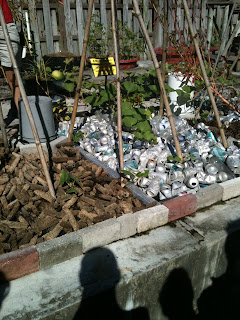Colloquium was a very fun and interesting class. I learned things about Southwest Florida I never knew before, and things about world issues I never knew before. The field trips were the best part of the class. My favorite field trip was walking through the swamp behind the school. I never walked through the swamp before, and it's an experience I will always rememeber.
Some of the Colloquium reader essays were really dull and boring. Maybe getting some new reading material would make reading for the class more interesting and not so confusing and boring. For example, Dewey and Louv's writings were so repetitative and hard to understand. I really didn't like reading their essays.
I liked all the assignments. I think it was just enough of a workload, and didn't get in the way with my other classes.
The sustainablity meal is definitely a keeper for the course, as well as, group discussions about the readings and all the field trips. Maybe, next time when going to Matanzas Pass Preserve, letting the students go to the beach side also and learn more about the features of the beach and not only the bay.


































